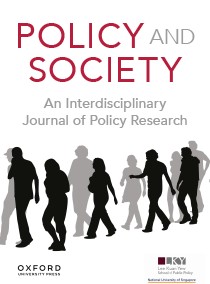政府层面的区块链应用:颠覆还是幻想?爱沙尼亚的案例
IF 6.1
1区 社会学
Q1 POLITICAL SCIENCE
引用次数: 6
摘要
区块链技术使新型分散系统成为可能。因此,它经常被认为是一种“颠覆性”技术,有可能重塑政治、经济和社会关系,“解决”腐败、权力集中和对政治机构的不信任等问题。区块链已逐渐获得金融以外的关注,因此被一系列不同的参与者应用。这包括对试验区块链支持治理的潜力感兴趣的地方、地区和国家政府。这篇文章有助于确定区块链作为一个有争议的社会政治对象,容易产生关于其潜力的矛盾的政治想象,特别是在应用于政策时。本文在爱沙尼亚的背景下探讨了区块链最受称赞的一些功能(例如,去中心化和透明度),爱沙尼亚是区块链政府应用中被引用最多的例子之一。爱沙尼亚作为据称第一个整合区块链的国家基础设施而受到国际关注。然而,到目前为止,很少有人问:爱沙尼亚政府在实践中建立了什么样的基于区块链的工具,为什么?基于区块链的政府应用在多大程度上反映了颠覆加密社区的最初承诺?本文采用定性方法来探索几个基于区块链的社会技术对象,以确定爱沙尼亚出现的叙述。该研究显示了制度领域内外的利益相关者和技术专家之间明显不同的观点。冲突围绕着与许可区块链和公共区块链相关的两种不同的社会想象。本文最后分析了每种愿景的深刻政治含义。本文章由计算机程序翻译,如有差异,请以英文原文为准。
Blockchain-based application at a governmental level: disruption or illusion? The case of Estonia
Blockchain technology enables new kinds of decentralized systems. Thus, it has often been advocated as a “disruptive” technology that could have the potentiality of reshaping political, economic, and social relations, “solving” problems like corruption, power centralization, and distrust toward political institutions. Blockchain has been gradually gaining attention beyond finance and is thus applied by a range of different actors. This includes local, regional, and national governments interested in the potentiality of experimenting with blockchain-supported governance. This article contributes to identifying blockchain as a contested socio-political object prone to contradictory political imaginaries regarding its potentialities, particularly when applied to policy. The article explores some of the most praised of blockchain’s affordances (e.g., decentralization and transparency) in the context of Estonia, one of the most cited examples of blockchain governmental applications. Estonia has received international attention as the alleged first national infrastructure integrating blockchain. However, so far, few have asked: what kind of blockchain-based tools have been built by the Estonian government in practice and why? And to what extent do blockchain-based governmental applications reflect the original promises of disruption of the crypto-community? This article draws on a qualitative approach to explore several blockchain-based socio-technical objects to identify the narratives that have emerged in Estonia. The research shows clear contrasting views between stakeholders and technical experts from inside and outside the institutional sphere. The conflict revolves around two different social imaginaries associated with permissioned vs. public blockchains. The paper concludes with an analysis of the profound political implications of each vision.
求助全文
通过发布文献求助,成功后即可免费获取论文全文。
去求助
来源期刊

Policy and Society
Multiple-
CiteScore
18.00
自引率
6.50%
发文量
43
审稿时长
30 weeks
期刊介绍:
Policy and Society is a prominent international open-access journal publishing peer-reviewed research on critical issues in policy theory and practice across local, national, and international levels. The journal seeks to comprehend the origin, functioning, and implications of policies within broader political, social, and economic contexts. It publishes themed issues regularly and, starting in 2023, will also feature non-themed individual submissions.
 求助内容:
求助内容: 应助结果提醒方式:
应助结果提醒方式:


